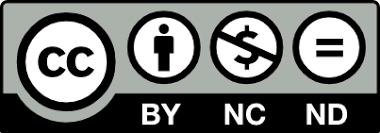CONCEPTUAL METAPHORS AND METONYMIES IN “CORALINE” BY N. GAIMAN
DOI:
https://doi.org/10.52340/PUTK.2023.2346-8149.03Keywords:
coraline, conceptual metaphor theory, cognitive linguistics, conceptual metonymyAbstract
This research embraces conceptual metaphors and metonymies in Neil Gaiman’s book “Coraline”. The theoretical framework of the article is based on the Conceptual Metaphor Theory (CMT) by Lakoff and Johnson (1980), and the Contemporary Theory of Metaphor by Lakoff (1993). The article employs the qualitative method of analysis: the metaphoric and metonymic linguistic expressions from the book have been selected and grouped according to their corresponding cognitive metaphors and conceptual metonymies. Thus, the research aims to identify and analyze these linguistic expressions and their conceptual metaphors and metonymies, identify their significance and relation to the plot, and the function of universal and cultural-specific metaphors.
Full Text (PDF)
References
Alarcon, P., Diaz, C., Tagle, T., Vasquez, V., Inostroza, M. J., Quintana, M., Ramos, L. (2019). Map, Foundations, Recipe, Burden: Teachers’ Conceptual Metaphors on Lesson Planning. D.E.L.T.A. 35(4). 1-22. http://dx.doi.org/10.1590/1678-460X2019350408
Araya Sanhueza, S., Barrera Bustos, J., Del Valle Maltton, R., Larenas Moyano, R., Pizarro Jourquera, B., Quilodrán Jara, N., Veragara Avecado, W. (2015). Conceptual Makeup of Metaphors: Metaphoric Sources and Targets in their Bidirectional Interplay. URL: https://repositorio.uchile.cl/handle/2250/137579
Fangfang, W. (2009). The Metaphorical and Metonymical Expressions including Face and Eye in Everyday Language. Accessed: https://researchportal.hkr.se/sv/studentTheses/the-metaphorical-and-metonymical-expressions-including-face-and-e?fbclid=IwAR1jF5YdfKkIB8fsBHJRcaLOod30_gCDmsQdRhrMnidazx3QTwKjivLOUbk
Forceville, C. (2016). Pictorial and Multimodal Metaphor. Handbuch Sprache in multimodalen Kontext (The Language in Multimodal Contexts Hanbook). Mouton de Gruyter. 241-260
Gamkrelidze, T. (2008). A course in theoretical linguistics]. Ivane Javakhishvili Tbilisi State University Publishing House.
Goossens, L. (1990). Metaphtonymy: The interaction of metaphor and metonymy in expressions for linguistic action. Cognitive Linguistics. 1(3). 323-340. https://doi.org/10.1515/cogl.1990.1.3.323
Harrison, V.S. (2017). Conceptual Metaphors and the Sense of Knowing: East and West. Revista Brasileira de Filosofia da Religiāo. ISSN 2358-8284. 4(2). 37-52.
Herrero Ruiz, J. (2005). The KNOWLEDGE IS VISION and THE AUTHORITY IS A BOUNDED REGION Metaphor in Fairy Tales. INTERLINGÜISTICA. ISSN 1134-8941. 16 (1). 569-578.
Kieau, V.T. (2017). VIETNAMESE CULTURAL CONCEPTUALIZATION OF INTERNAL BODY ORGANS IN SOUTH EAST ASIAN LINGUISTICS (SEALS). International Journal of English Language and Linguistic Research. 5(6). 28-42.
Kodua, E. (2001). Sociology of Culture. Nekeri.
Kövecses, Z. (1990). Emotion Concepts. Springer. https://doi.org/10.1007/978-1-4612-3312-1
Kövecses, Z. (2010a). Metaphor: A Practical Introduction (2nd.ed.). Oxford University Press.
Kövecses, Z. (2010b). Metaphor and Culture. Acta Universitatis Sapientiae, Philologica, 2(2). 197-220. DOI:10.1093/acprof:oso/9780190224868.003.0005
Kövecses, Z. (2017). Conceptual Metaphor Theory. The Routledge Handbook of Metaphor and Language. Routledge. 13-27.
Lakoff, G. (1993). The contemporary theory of metaphor. Metaphor and Thought. Cambridge University Press. 202-251. https://doi.org/10.1017/CBO9781139173865.013
Lakoff, G. & Johnson, M. (1980). Metaphors we live by. The University of Chicago Press.
Lakoff, G. & Johnson, M. (1999). Philosophy in the Flesh – The Embodied Mind and Its Challenge to Western Thought. Basic Books.
Lakoff, G. & Turner, M. (1989). More than Cool Reason. The University of Chicago Press.
Ling, S. (2010). A Cognitive Study of War Metaphors in Five Main Areas of Everyday English: Politics, Business, Sport, Disease and Love. Kristianstad University: School of Teacher Education. Link: https://www.diva-portal.org/smash/get/diva2:397473/FULLTEXT01.pdf)
Nhan, N. T. (2019). Conceptual Metaphors Using English Nautical Expressions. VNU Journal of Foreign Studies. 35 (6). 59-74.
Peradze, N. (2021). Conceptual Metaphor and Metonymy in Howl’s Moving Castle by Diana Wynne Jones and Hayao Miyazaki]. [Unpublished Master’s Thesis. Tbilisi State University.]
Rusieshvili – Cartledge, M. & Dolidze, R. (2015). Space and metaphors: on the example of the English and Georgian languages. Humanities and Social Sciences Review. ISSN: 2165-6258. 531-536.
Sigua, S. (2013). Foundations of Cultural Studies I. Tbilisi.
Thibodeau, P.H., Hendricks, R.K., Boroditsky, L. (2017). How Linguistic Metaphor Scaffolds Reasoning. Trends in Cognitive Sciences. 21(11). 852-863. https://doi.org/10.1016/j.tics.2017.07.001
Topchishvili, R. (2009a). The Ethnology of Europe]. Ivane Javakhishvili Tbilisi State University Publishing House.
Topchishvili, R. (2009b). The Ethnology of America]. Ivane Javakhishvili Tbilisi State University Publishing House.
Zibin, A. & Hamdan, J.M. (2019). The Conceptualisation of FEAR through Conceptual Metonymy and Metaphor in Jordanian Arabic. International Journal of Arabic. 29(2). 243-266. https://doi.org/10.33806/ijaes2000.19.2.1
Zohrabi, M., Layegh, N. (2020). Bidirectionality of Metaphor in Fiction: A Study of English Novels. Applied Linguistics Research Journal. 4(4). 88-99. doi: 10.14744/alrj.2020.74936
Book:
Gaiman, N. (2003). Coraline (ed). First Scholastic printing. (Original work published in 2002 by HarperCollins)
Web-pages and articles :
Coraline. (n.d.). Neil Gaiman. Retrieved from: https://www.neilgaiman.com/works/Books/Coraline/
Hellenic Museum. (2017, April 30). The Final Journey: Crossing the Styx. https://www.hellenic.org.au/post/the-final-journey-crossing-the-styx
McCoy, D. (2012-2019). HEL (THE UNDERWORLD). https://norse-mythology.org/cosmology/the-nine-worlds/helheim/
Dictionaries:
Cambridge Dictionary. Expedition. Retrieved from: https://dictionary.cambridge.org/dictionary/english/expedition












